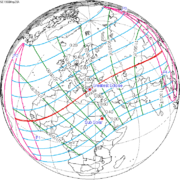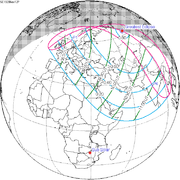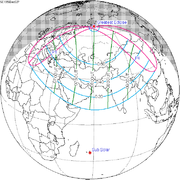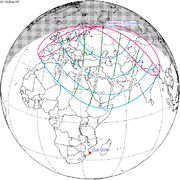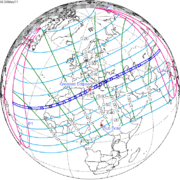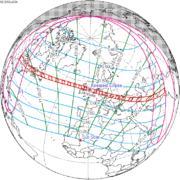| Lists of solar eclipses |
|---|
 |
| Solar eclipses in antiquity |
| Solar eclipses in the Middle Ages |
| Modern history |
| The future |
| Eclipses seen from |
| See also Lists of lunar eclipses |
This list of solar eclipses visible from Turkey enumerates the solar eclipses that have been and will be seen over Turkey. [1]
Contents
- Eighteenth century and earlier
- Total solar eclipses
- Annular solar eclipses
- Partial solar eclipses
- Nineteenth century
- Total solar eclipses 2
- Annular solar eclipses 2
- Twentieth century
- Total solar eclipses 3
- Annular solar eclipses 3
- Partial solar eclipses 2
- Twenty-first century
- Total solar eclipses 4
- Annular solar eclipses 4
- Partial solar eclipses 3
- References
- External links
















